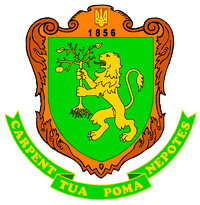INTENSITY OF ACCUMULATION OF HEAVY METALS AND TRACE ELEMENTS IN THE VEGETATIVE MASS OF COTTON GROWN ON GREY FOREST SOILS OF THE RIGHT-BANK FOREST-STEPPE
Keywords:
lead, cadmium, zinc, copper, accumulation coefficient, cotton plant, phytoremediationAbstract
The intensification of crop production leads to an increase in production volumes, which in turn raises the technogenic burden on the environment, particularly concerning soil quality and safety of crop products. A significant environmental threat is the accumulation of heavy metals, whose presence in soils has increased significantly due to the extensive use of mineral fertilizers, pesticides, industrial emissions, and the ongoing military aggression of russia against Ukraine.
This article explores the accumulation of heavy metals (lead and cadmium) and trace elements (zinc and copper) in the vegetative mass of cotton (Gossypium L.) cultivated on the grey forest soils of the Right-Bank Forest-Steppe. The study involves an analysis of the concentrations of these elements in both soil and plant biomass, as well as determining accumulation coefficients of heavy metals to evaluate the efficacy of the Dniprovskyi 5 cotton variety for phytoremediation in contaminated areas.
The findings indicate that zinc is the most readily accumulated element within the cotton's vegetative mass, occurring nearly four times more than copper and eight times more than lead. Copper ranks second in terms of accumulation, being 2.2 times more than lead and 21 times more than cadmium. Notably, the concentration of cadmium in the vegetative mass is the lowest among all the heavy metals studied. In terms of accumulation levels in the aboveground parts of the cotton plant, the order of heavy metals and trace elements is arranged from lowest to highest as follows: cadmium → lead → copper → zinc.
Based on the accumulation coefficient (Ca), cotton has been found to have a high capacity for accumulating copper (Ca = 45.9) and zinc (Ca = 19.4), indicating its effectiveness in phytoremediation of contaminated areas. The accumulation of lead (Ca = 3.73) and cadmium (Ca = 4.57) in the vegetative mass also confirms the plant’s ability to extract toxicants from the soil.
The potential of using cotton plants for soil remediation from heavy metal contamination has been assessed. The obtained results can be used for developing phytoremediation strategies and evaluating the environmental safety of agroecosystems.
References
Boretska I. Ya., Dzhura N. M., Romaniuk O. I. Phytoremediation of technogenically contaminated soils using energy crops. Ecological Sciences. 2021. No 6. P. 72–76. URL: https://doi.org/10.32846/2306-9716/2021.eco.6-39.11 (in Ukrainian).
Borovyk V. O., Stepanov Yu. O. Historical path of development of cotton breeding at the Institute of Irrigated Agriculture. Irrigated Agriculture. 2014. Issue 62. P. 95–98. (in Ukrainian).
Braininher O. I. Peculiarities of translocation and accumulation of heavy metals in the system “soil–plant–agricultural products”. Tavria Scientific Bulletin. 2022. Issue 123. P. 225–231. URL: https://doi.org/10.32851/2226- 0099.2022.123.31 (in Ukrainian).
Chorna V. I., Voroshylova N. V., Syrovatko V. A. Cadmium distribution in soils of Dnipropetrovsk oblast and its accumulation in crop production. Ukrainian Journal of Ecology. 2018. No 8 (1). P. 910–917. URL: https://doi.org/10.15421/2018_293 (in English).
Denchylia-Sakal H. M., Nikolaichuk V. I., Kolesnyk A. V., Vakerych M. M., Tkach O. P. Peculiarities of accumulation of heavy metals in Trifolium pratense L. plants. Scientific Bulletin of Uzhgorod University. Series: Biology. 2012. Issue 33. P. 189–191 (in Ukrainian).
Dursun S., Symochko L., Mankolli H. Bioremediation of heavy metals from soil: an overview of principles and criteria of using. Agroecological Journal. 2020. No 3. P. 6–12. URL: https://doi.org/10.33730/2077-4893.3.2020.211521 (in English).
Herlina L., Widianarko B., Purnaweni H., Sudarno S., Sunoko H. Phytoremediation of Lead Contaminated Soil Using Croton (Cordiaeum variegatum) Plants. Journal of Ecological Engineering. 2020. No 21 (5). P. 107–113. URL: https://doi.org/10.12911/22998993/122238 (in English).
Husarova A. Odessa farm expects to get the first crop of irrigated cotton at the level of 2.5-3 t/ha. SuperAgronom. 2024. URL: https://superagronom.com/news/19108-odeske-gospodarstvo-rozrahovuye-otrimati-pershiy-urojay-bavovniku-na-zroshenni-na-rivni-25-3-t-ga%20 (in Ukrainian).
Hyrlia L. M. Phytoremediation – an effective way to reduce the content of heavy metals in soils. Scientific works [Petro Mohyla Black Sea State University of the "Kyiv-Mohyla Academy" complex]. Series: Ecology. 2011. Vol. 152. Issue 140. P. 57–59. (in Ukrainian).
Myslyva T. M. Lead and cadmium in soils of agricultural landscapes of Zhytomyr Polissia. Bulletin of Sumy National Agrarian University. 2013. Issue 3. P. 43–50 (in Ukrainian).
Nemolovska T., Snihovyi V., Orliuk A. Prospects for cotton cultivation in Southern Ukraine. Proposal. 2008. URL: https://propozitsiya.com/ua/perspektivi-viroshchuvannya-bavovniku-na-pivdni-ukrayini (Accessed 03 February, 2025) (in Ukrainian).
Razanov S. F., Tkachuk O. P., Razanova A. M., Bakhmat M. I., Bakhmat O. M. Intensity of heavy metal accumulation in plants of Silybum marianum L. in conditions of field rotation. Ukrainian Journal of Ecology. 2020. No 10 (2). Р. 131–136. URL: https://doi.org/10.15421/2020_75 (in English).
Samokhvalova V. L. Biological methods of remediation of soils contaminated with heavy metals. Biological Studies. 2014. Vol. 8, No 1. P. 217–236 (in Ukrainian).
Snitynskyi V. V., Tkachuk O. P., Razanova A. M., Koruniak O. P. Efficiency of phytoremediation of soil contaminated with heavy metals during the cultivation of milk thistle. Agriculture and Forestry. 2023. No 1. P. 164–171. URL: https://doi.org/10.37128/2707-5826-2023-1-11 (in Ukrainian).
Tkachuk O. P., Razanova A. M. Comparative assessment of Zn accumulation by milk thistle (Silybum Marianum) depending on the type of mineral fertilizers. Agroecological Journal. 2020. No 1. P. 98–103. URL: https://doi.org/10.33730/2077-4893.1.2020.201278 (in Ukrainian).
Tkachuk O. P., Razanova A. M. Intensity of Pb accumulation in leaf mass and seeds of milk thistle (Silybum Marianum). Bulletin of Uman National University of Horticulture. 2020. No 1. P. 109–112. URL: https://doi.org/10.31395/2310-0478-2020-1-109-112 (in Ukrainian).
Vdovenko S. A., Hetman N. Ya., Didur I. M. Intensity of accumulation of lead and cadmium by milk thistle on different soils. Agrobiology. 2021. No 2. P. 15–21. URL: https://doi.org/10.33245/2310-9270-2021-167-2-15-21 (in Ukrainian).
Vozhehova R. A. Peculiarities of the duration of the vegetation period of samples of the cotton gene pool Gossypium hirsutum L. in the conditions of the Southern Steppe of Ukraine. Agrarian Innovations. 2022. No 12. P. 85–89. URL: https://doi.org/10.32848/agrar.innov.2022.12.13 (in Ukrainian).
Yehorova T. M., Sapsai T. P. Peculiarities of the formation of zinc imbalance in biogeochemical chains of agrolandscapes of Ukraine. Tavria Scientific Bulletin. 2016. Issue 96. P. 197–204 (in Ukrainian).

